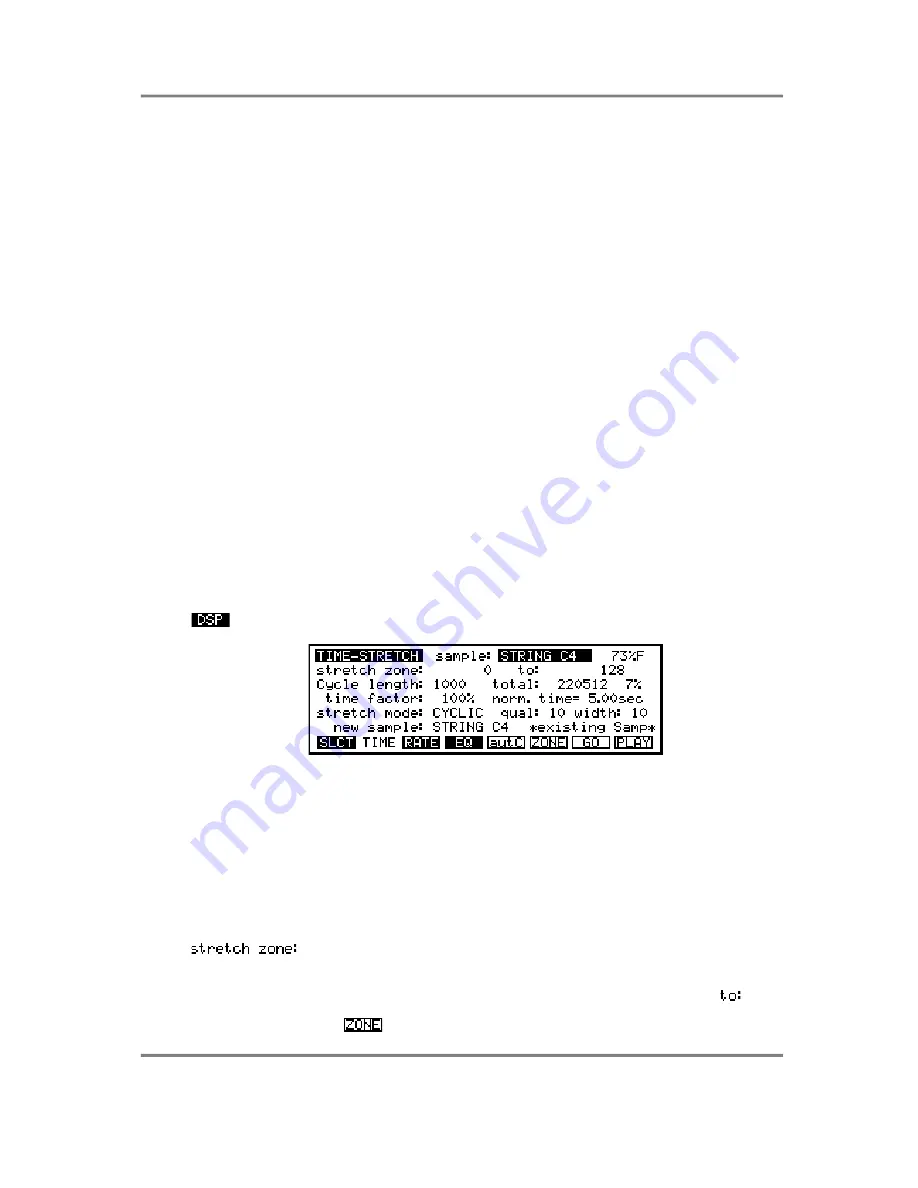
EDIT SAMPLE
Page 140
S3000XL Operator’s Manual
with stretch factors exceeding 10% or so, you may get an echo or ‘flam’ effect on some
transients because the processor has inserted a transient. When shrinking a recording,
you may find a transient softened because the processor has decided to remove it. You
will find this to be the case more or less on all devices that feature some form of time
compression or expansion.
A lot of these problems depend on the nature of the audio material being processed and
settings that process the spoken word perfectly could make a right mess of a percussive
dance track. The converse is also true. The biggest problem is in material that has a
healthy balance of low and high frequencies because different timestretch parameters are
required to process different frequency ranges - in audio material that has a wide
frequency composition there is much adjustment to be done to obtain the correct
compromise so that both frequency ranges are adversely affected as little as possible.
Please be aware that, on occasions, you may never get absolutely perfect results and
there may be occasional side effects, especially with extreme settings of stretch - of
course, these side effects can be put to good use for the creation of special effects!! Over
smaller ranges, however, you will find the timestretch on the S3000XL yields excellent
results and will become an invaluable tool in your work, whatever application you are
working in.
You could use timestretch to alter the length of a drumloop or breakbeat without altering
the pitch in order for it to fit in with the rest of the track or you could use it to speed up or
slow down a track to change the ‘groove’ or feel. You could even use the timestretch to
overcome timing discrepancies of a ‘live’ band or use it to create gradual tempo changes,
etc.. It can be used to change the length of, say, a backing vocal part or guitar solo so
that it can be played back at a different pitch and so accommodate key changes. You
could use it to maintain the same vibrato speed for a number of ‘multi-samples’ created
from one original sample. There are many possibilities which you will no doubt discover for
yourself.
Let us now examine how to operate the Timestretch function on the S3000XL. Pressing
will give this screen:
This enables you to lengthen or shorten a sample or a selected part of a sample from
25% of its original length to 2000% (twenty times) without changing its pitch.
Two modes are available for stretching: CYCLIC, in which a fixed interpolation rate is
maintained throughout the whole of the sample (suitable for individual instrument
samples), and INTELL, in which the S3000XL “intelligently” varies the interpolation rate
according to the sample content (suitable for speech and music).
As usual, you may select the sample to be edited at the top of the page. The parameters
on this page are:
Here you may set two values to set the start and end of the area
of the chosen sample you wish to stretch. You may only want to
stretch one part of the sample so it should be set here. The first
field sets the start point of the stretched area and the
field
sets the end. You may audition the area you have set using the
key (F6).






























